





Cosmos are insanely easy to start from seed. As Wildseed Farms puts it so eloquently, "If you have trouble growing Cosmos, take up golf!"
Cosmos were introduced in the early 1800's to English gardens from their native Mexico (1). Spanish priests who used Cosmos in their Mexico mission gardens, named them for the Greek word "cosmos," meaning harmony or ordered universe due to their precisely placed petals (2).
Be careful not to start them too early indoors, if at all, because you'll end up with leggy, weak plants before you know it. It is best to direct sow these annuals by pressing the darker, thicker pointy side of the seed down into the soil about 1/4 inch leaving the sharp, skinny tail somewhat exposed. Within a few days to a week, you should start to see the feathery foliage emerging. Some Cosmos will bloom within a few weeks of germination, even as they are only a few inches high. Whatever you do- don't fertilize Cosmos! They don't need help in the growth department. Cosmos take full sun and make great background plants with their airy foliage and bright flowers. With all the shapes, colors and sizes of new Cosmos cultivars, you can find the perfect one for your garden.
Daydream
'Daydream' is a very tall variety with smallish, baby pink flowers and a darker mauve eye. This Cosmos forms more of a ruffled cup than some other varieties.
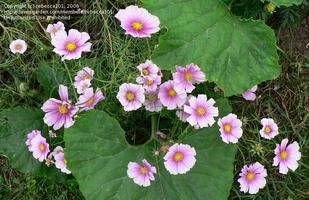
Double Click
A beautiful semi and fully double bloomer, Double Click's blooms almost resemble Sea Thrift or Chrysanthemum floating above airy Cosmos foliage. Its blooms come in an array of colors from white to alizarin. If you love Cosmos, 'Double Click' is definitely one you should try
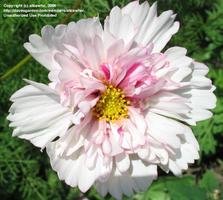
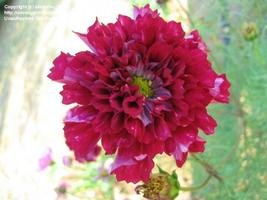
Orange Cosmos (C. sulphureus)
Orange Cosmos are a great option for a care free spot of warm color in your garden. Readily available in garden centers and online, this is an excellent choice for a standard Cosmos.
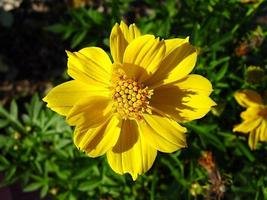
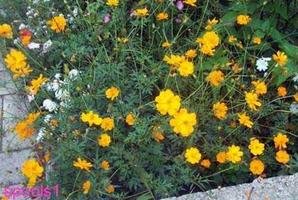
Dwarf Sensation Mix
Don't let the name fool you too bad, 'Dwarf Sensation' Cosmos can still get up to 3 feet tall. This may only be considered small compared to its non-dwarf cousin 'Sensation Mix,' which can reach 5-7 feet. 'Sensation Mix' was introduced in the 1930's Either way, this variety has petite, loosely petaled flowers from white to bright pink.
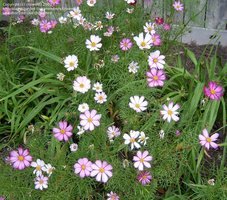
Sonata
One of the more common cultivars, 'Sonata' Cosmos can come in white, carmine, or a mix of white, pinks, and dark pinks. This particular Cosmos can be floppy and leggy in the garden. It may need staking, but it can make a great back drop to shorter plants in a border garden.
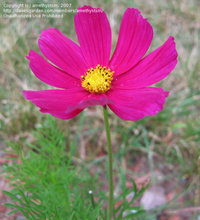
Seashells
'Seashells' is a newer cultivar of Cosmos that resembles no other member of its family. Each petal forms a hollow tube resembling a seashell or cornucopia. 'Seashells' comes in a variety of colors from bright white to deep fuchsia. If you can't find 'Seashells,' 'Pied Piper Red' is a variety that looks very similar.
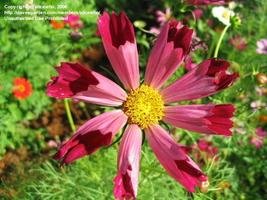
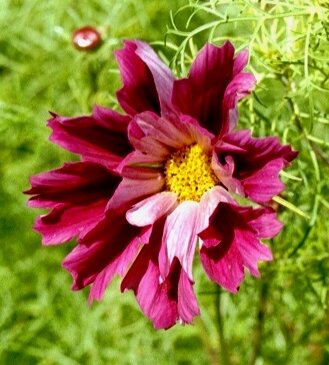
Versailles
'Versailles' is a newer hybrid with large, pale pink to white blooms with a darker eye and bright yellow center. There is also a dark merlot-colored 'Versailles,' which also has the signature large blooms and bright center.
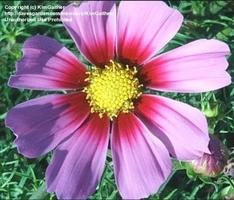
Chocolate Cosmos (C. atrosanguineus)
Chocolate Cosmos are the deepest crimson color with petite petals and a dark eye. This Cosmos has less frilly foliage than it C. bipinnatus cousin and only grows to 2 feet. There's a great bonus with this one though: it smells like ...chocolate!
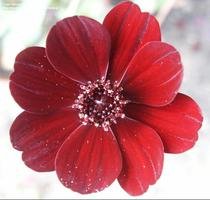
Candy Stripe
'Candy Stripe' Cosmos have blush petals that radiate out to darker rosy edges. They say that no two flowers on 'Candy Stripe' look alike. This is a medium height cultivar, reaching 2-3 feet.
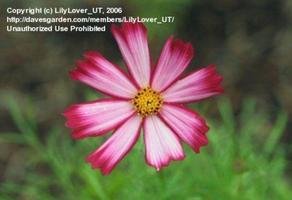
Phillipine
This striking Cosmos has a deep red, almost brown center which changes to bright yellow halfway out the petal. This one is very new and hard to get your hands on.
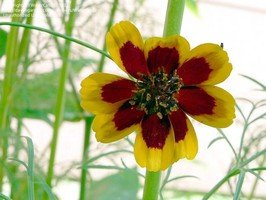
Picotee
'Picotee' Cosmos have beautiful light pink to white petals that look as though the edges have been airbrushed with magenta. With a bright yellow eye, Picotee can hold its own against perennials and other bright annuals. 'Picotee' is very similar to 'Candy Stripe,' but with slightly more white in the petals.
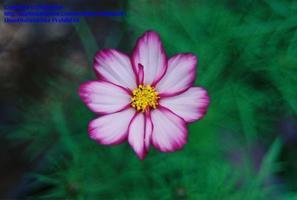
Psycho White
'Psycho White' Cosmos produce a bright white, double bloom high above its thread-like foliage. This is an excellent choice for large white blooms and makes an excellent cut flower, as do most Cosmos.
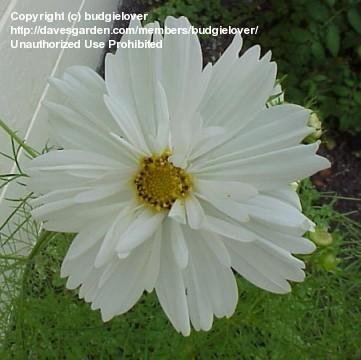
Happy Ring
'Happy Ring' looks like a tie-dyed light pink Cosmos with its broken patterning. 'Happy Ring' gets its name for the bright white inner circle juxtaposed with a dark pink ring which fades out to lighter pink on the edges.
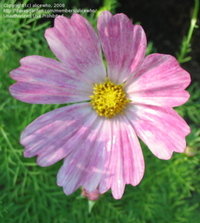
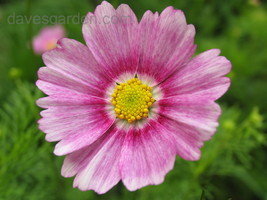
Red Crest
'Red Crest' is a beautiful and different Cosmos that has a deep yellow-orange double bloom with red seemingly brushed onto its tips. Not as easy to find, 'Red Crest' is a beauty to add to your Cosmos collection.
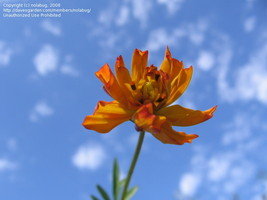
Lemon Twist
For a brighter, lemon yellow semi-double bloom, go for Lemon Twist. You can't help but smile when you come across this cheery color in the garden. Grows to 2-3 feet.
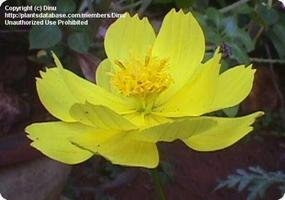
Cosmic Red
For a gorgeous orangey-red Cosmos, try 'Cosmic Red'. This one has dark orange petals which radiate out to bright red above standard-Cosmos foliage.
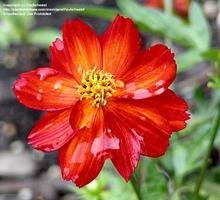
Don't be scared to try Cosmos this season. Even if you start Cosmos from seed in mid-summer you can surely have masses of blooms before the first frost. Just make sure you put them in a location you don't mind some reseeding!
Double Click, Happy Ring, Seashells - Alicewho Dwarf Sensation - Crowelli Gazebo White - MuibienSonata, Summer Dreams - Amethystm
Lemon Twist - DinuRed Crest - Nolabug Candy Stripe - AnneCSSeashells - EvertCosmic Red - PaulhwestOrange Cosmos - PoppysueVersailles - KimGaitherPicotee - RubyStarPsycho White - BudgieloverCandy Stripe - LilyLover_UTDaydream, Sonata Mix - Rebecca101
Chocolate Cosmos - SayaPhilipine - WaterCan2Orange Cosmos- HtopHappy Ring - Anitabryk21. http://www.taunton.com/finegardening/plantguide/cosmos-bipinnatus-cvs.aspx
2. http://plantanswers.tamu.edu/flowers/cosmos/cosmos.html
Copyright © www.100flowers.win Botanic Garden All Rights Reserved